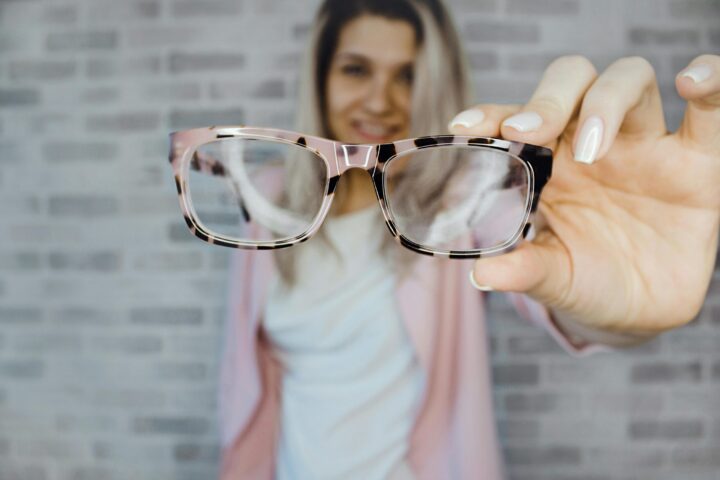The following contribution is from another author.
Eyes are pretty amazing when they work the way they should. But sometimes, one or both eyes don’t do their job quite right. When that happens, things can look blurry, uneven, or just off. Good news is, most eye problems in kids can be helped with small changes—like wearing glasses, doing simple eye exercises, or using a patch for a while.
These little things might not seem like a big deal, but they can actually help a lot. And when eyes start working better, it makes reading, playing, and seeing everything around way easier.
Helping a Weaker Eye Catch Up
One common eye issue some kids have is called amblyopia, which people also call “lazy eye.” It doesn’t mean the eye is actually lazy. It just means the brain isn’t using that eye as much as it should. So it kind of takes a backseat while the stronger eye does all the work.
That’s not good for vision in the long run, but doctors have a way to fix it. One of the main treatments is lazy eye occlusion therapy, where the stronger eye gets covered for part of the day so the weaker one has to work harder. That way, the brain learns to use both eyes again.
There are different kinds of patches and methods, and everyone’s treatment plan is a little different. To learn more about how the process works and why it matters, this article on lazy eye occlusion therapy explains it all really clearly.
The main thing is, even though it feels weird at first, patching works. It gives the weaker eye the chance to improve, so both eyes can become a team again.
Glasses That Do More Than Look Cool
Sometimes, glasses aren’t just about seeing clearly. For kids with a lazy eye or another eye issue, glasses can help guide the eyes to focus better or line up properly. They can even fix small vision problems without any other treatment.
Doctors figure out exactly what kind of glasses are needed through a test that shows how each eye is working. Then they give a prescription that’s made just for those eyes. It’s kind of like getting shoes that fit perfectly—you wouldn’t want them too tight or too loose.
Wearing glasses every day helps the brain get used to the way both eyes should be working. And when the brain gets better at using both eyes, everything from reading to playing sports becomes a lot easier.
Eye Exercises That Actually Work
Not every eye problem needs a patch or glasses. Sometimes, doctors recommend vision therapy. That means doing special eye exercises to train the brain and eyes to work together better.
These exercises might include looking at targets, focusing on objects that move, or using tools at the eye doctor’s office. Some kids even play games on a computer that are made to help both eyes focus at the same time.
Vision therapy can take a few weeks or months, but it’s pretty fun compared to other treatments. It’s kind of like doing a workout, but for the eyes. And the more the eyes practice, the stronger they get.
Why Catching Problems Early Matters
A lot of the time, kids don’t even know something is wrong with their eyes. One eye might be doing all the work, and they’ve just gotten used to it. That’s why eye exams are super important, even when nothing seems wrong.
Eye doctors can spot signs of amblyopia, crossed eyes, or blurry vision that kids might not notice. And when these things get caught early, they’re way easier to treat.
The brain is really flexible when kids are younger, so it responds better to treatment. That’s why doctors say the best time to fix a lazy eye or any other vision issue is before age 8 or 9. But even older kids can still improve with the right treatment plan.
Making Treatment Feel Normal
Wearing a patch, getting glasses, or doing eye exercises might seem annoying at first. But once it becomes part of the routine, it’s just something to check off during the day. The results are worth it.
There are fun designs for eye patches that kids can choose from, and glasses now come in tons of cool styles. Even vision therapy can feel more like a game than a medical thing.
The most important part is sticking with the plan. Even if the patch is uncomfortable or the glasses feel strange, it helps to remember what it’s for. Every day of treatment helps the eyes get a little better.
And it’s not forever. Once the weaker eye is strong enough, the doctor might say it’s okay to stop patching or switch to just wearing glasses. That means more freedom and clearer vision ahead.
What Makes a Real Difference
All these little steps—patches, glasses, exercises—they don’t seem huge. But they matter. They help fix problems that could make life harder later on. Better vision means doing better in school, playing easier with friends, and feeling more confident.
No one wants to struggle to see the board in class or trip over things during a game. That’s why even small fixes can make a big difference. And the earlier kids get help, the better their eyes can work over time.
Sometimes, it takes patience. Vision changes don’t always happen overnight. But with the right help, they happen. And once the eyes are working better together, everything else gets a little easier too.

















Jade & Blue
https://www.cairoaqar.com/%d9%83%d9%85%d8%a8%d9%88%d9%86%d8%af-%d8%ac%d8%a7%d8%af%d9%8a-%d8%a7%d9%86%d8%af-%d8%a8%d9%84%d9%88/